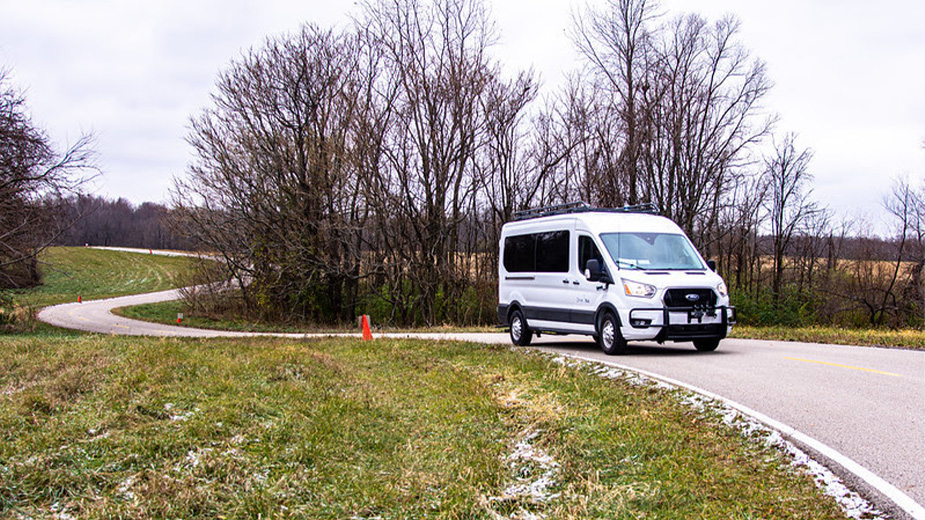DriveOhio Deploying Automated Vehicles on Ohio Roadways
COLUMBUS, Ohio – Drivers may soon see automated vehicles on rural roadways in central and southeast Ohio as DriveOhio’s Rural Automated Driving Systems project begins two deployments to gather data that will help define future technology needs.
The vehicles have already been tested at the Transportation Research Center Inc.’s 4,500-acre proving grounds in East Liberty, Ohio. This has provided closed roadway testing over a full range of navigational situations that are encountered in everyday driving before the vehicles are taken onto public roadways and highways.
“Automated driving systems are expected to transform roadway safety in the future, and the data collected with this project will be used to refine the technology to maximize its potential,” said DriveOhio Executive Director Preeti Choudhary. “This critical work will provide valuable information to help advance the safe integration of automated vehicle technologies in Ohio and across the nation.”
Funded in part by a $7.5 million grant from the U.S. Department of Transportation, the project aims to demonstrate how connected and automated semitrucks and passenger vehicles could improve safety for drivers, passengers and other travelers in rural settings. The project, which focuses on 32 counties in Ohio’s rural Appalachian region, is the most comprehensive testing effort to be conducted on rural roads in the United States.
“This project holds great promise for the future of transportation and the economic well-being of rural communities, while strengthening Ohio’s historic reputation as a world leader in transportation safety and innovation,” said Brett Roubinek, president and CEO of the Transportation Research Center.
The first of two deployments includes three passenger vehicles equipped with AutomouStuff technology traveling on divided highways and rural two-lane roads in Athens and Vinton counties. They will be tested in different operational and environmental conditions, including in periods of limited visibility and in work zones. When the automated driving system is engaged, the technology will control steering, acceleration and braking. Throughout the yearlong deployment, professional drivers will always be in the driver’s seat with their hands on the wheel, ready to take over if needed.
“Many vehicles on the road today already have some degree of automated driving system technologies like adaptive cruise control, lane keep assist or emergency braking. Those systems are meant to enhance safety, but they certainly don’t replace the human driver,” Choudhary said.
The second deployment will feature a pair of 53-foot platoon-equipped tractor-trailers connected by technology that enables them to travel closely together at highway speeds. When the trucks are connected, the lead vehicle controls the speed, and the following vehicle will have precisely matched braking and acceleration to respond to the lead vehicle’s movement.
The trucks used in this project are equipped with radar to detect other vehicles. This technology allows the trucks to monitor and react to the environment around them in certain ways, such as following the lead vehicle and responding to slower moving traffic. Like the first deployment, professional drivers will always be in the driver’s seat with their hands on the wheel.
The trucks will first be deployed on the 35-mile U.S. 33 Smart Mobility Corridor, specifically designed for testing smart and connected vehicles. Later this year, a private fleet will begin using the trucks in their day-to-day business operations.
Pictured at top: A vehicle using an automated driving system. (DriveOhio)
Published by The Business Journal, Youngstown, Ohio.



